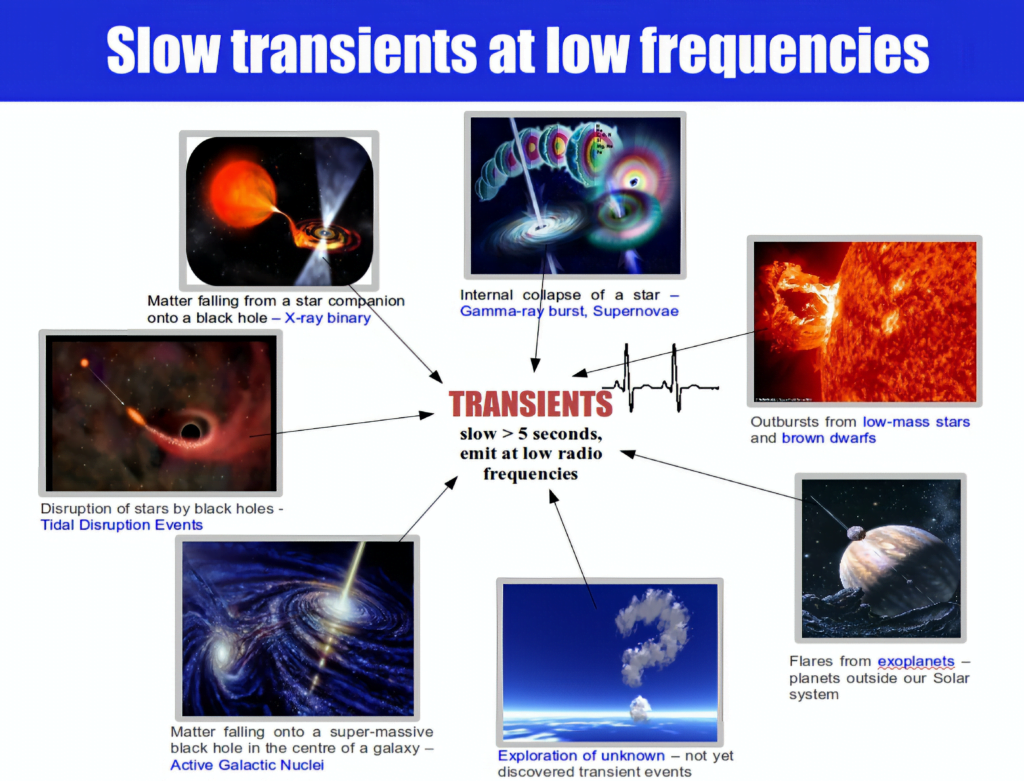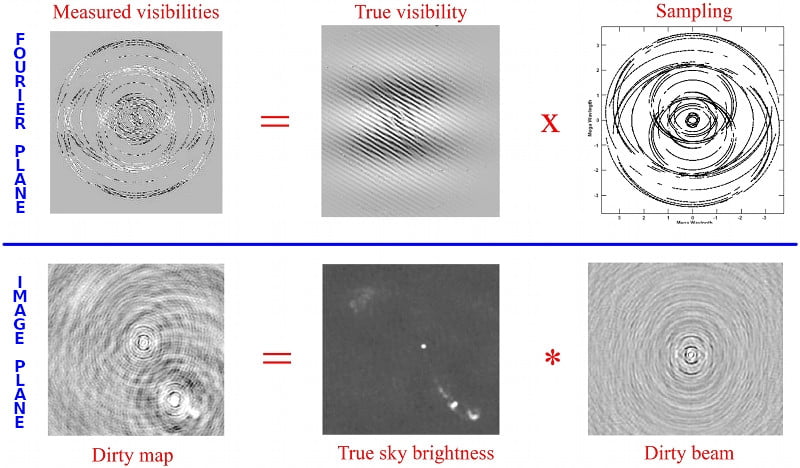Searching for unusual astronomical phenomena in radio interferometric array data (see Fig. 1) is resource-demanding, given limited funds, human resources, and computing power.

Fig. 1. Different types of slow transient celestial sources at low radio frequencies. (Credit: Dale A. Frail)
Transient detection is a real data management problem. The new generation large radio arrays have a wide field of view, and high precision and sensitivity – they collect a staggering amount of data, so much that traditional processing methods are no longer likely to perform the role of good data delivery. Innovation is calling.
As a Ph.D. candidate in Data-Intensive Astronomy (DIA), I dedicate myself to exploring advanced sparse methods for modern radio astronomy imaging procedures (see Fig. 2), and artificial intelligence algorithms to sift through large datasets looking for bright radio transient sources on 1 to 100 s timescales for SKA-scale surveys (see Fig. 1), where the most severe data avalanches would occur.

Fig. 2. Figures showing the Fourier transform relations between the Fourier plane (upper panel) and the image plane (lower panel). Upper panel: the visibility data measured by the interferometer, which are the products of the true visibilities and the array sampling function. Lower panel: the ‘dirty’ map, which is the convolution of the source brightness with the synthesized ‘dirty’ beam, is the Fourier Transform of the sampled visibilities. (Credit: Garrington 2007)
My study gives a good opportunity to open this data bottleneck to perform a “quick and dirty, super-efficient alarm” to detect these transient events, which will then supply a trigger for later full analysis in normal Science Data Processing (SDP).
ICRAR Statement
The content of this page is maintained by Xia Zhang, please contact them with any questions or comments on this content.